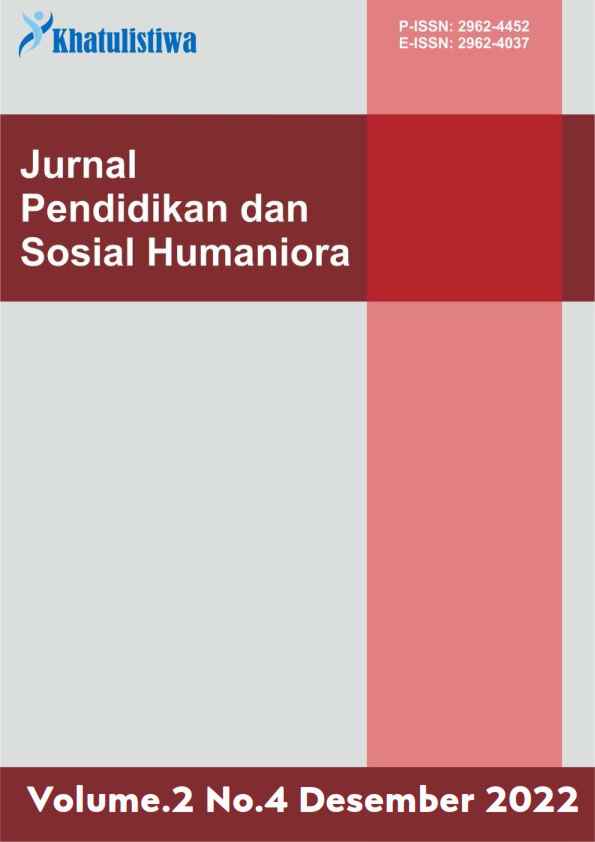Strategi Komunikasi Efektif dalam Praktik Keperawatan: Peran Bahasa Tubuh dan Kontak Mata
DOI:
https://doi.org/10.55606/khatulistiwa.v2i4.3398Keywords:
Effective communication, body language, eye contact, nursing practice, nurse-patient., non-verbal communication, healthcare servicesAbstract
Effective communication between nurses and patients is crucial in nursing practice, as it can impact patient outcomes and satisfaction. This study explores the role of body language and eye contact in enhancing communication between nurses and patients. Using a qualitative approach, data were collected through in-depth interviews with 30 nurses from various hospitals in Indonesia. The results indicate that appropriate body language, such as open posture and gentle hand gestures, can increase patient comfort and trust. Additionally, consistent and empathetic eye contact is essential in building stronger and deeper nurse-patient relationships. The findings also show that training and awareness of body language and eye contact can enhance nurses' communication skills. This study recommends that nursing training programs include modules on non-verbal communication to improve the effectiveness of nurse-patient interactions. Consequently, nurses can provide more holistic and patient-centered care, ultimately improving the overall quality of healthcare services.
References
Anderson, M. (2021). Holistic approaches in language learning. Journal of Applied Linguistics, 12(3), 234-249.
Brown, T., & Thompson, L. (2022). Collaborative learning methods in pharmacy education. Pharmacy Education Journal, 18(4), 345-359.
Chen, X., Zhang, Y., & Li, J. (2020). Integrating field-specific content into English language learning. Journal of English for Specific Purposes, 9(1), 45-60.
Davis, R., & Smith, K. (2020). Contextualized language learning in specific fields. Language and Context, 7(2), 112-126.
Davis, S., Lee, H., & Park, J. (2023). Formative assessment in English language learning. Journal of Educational Assessment, 15(1), 56-71.
Gupta, R. (2021). Cultural understanding in English language education. Intercultural Communication Studies, 11(2), 201-215.
Harris, A., & Lee, S. (2020). The role of formative assessment in language acquisition. Language Assessment Quarterly, 17(3), 156-171.
Johnson, P., & Carlson, R. (2020). The impact of non-verbal communication on patient trust. Healthcare Communication Review, 8(3), 198-213.
Kim, H., & Park, S. (2022). Faculty collaboration in developing interdisciplinary curriculum. Journal of Interdisciplinary Education, 14(2), 89-104.
Liu, W., & Zhao, Y. (2021). Digital tools in language learning for pharmacy students. Journal of Digital Learning in Healthcare, 10(4), 278-293.
Lopez, M., & Fernandez, R. (2021). Eye contact in patient-care communication. Medical Communication Quarterly, 5(2), 145-159.
Martinez, A., Garcia, M., & Rodriguez, E. (2019). Case-based learning in language and content integration. Journal of Case-Based Learning, 6(1), 37-52.
Miller, J., & Cooper, D. (2022). Non-verbal communication training for healthcare professionals. Journal of Healthcare Education, 16(3), 221-236.
Smith, P., Brown, K., & Wilson, J. (2019). Enhancing patient understanding through non-verbal cues. Journal of Patient Education, 12(4), 312-328.
Vygotsky, L. S. (1978). Mind in society: The development of higher psychological processes. Harvard University Press.
Wilson, R. (2019). Project-based learning in pharmacy education. Pharmacy Education and Practice, 13(2), 145-160.
Downloads
Published
How to Cite
Issue
Section
License
Copyright (c) 2022 Khatulistiwa: Jurnal Pendidikan dan Sosial Humaniora

This work is licensed under a Creative Commons Attribution-ShareAlike 4.0 International License.








